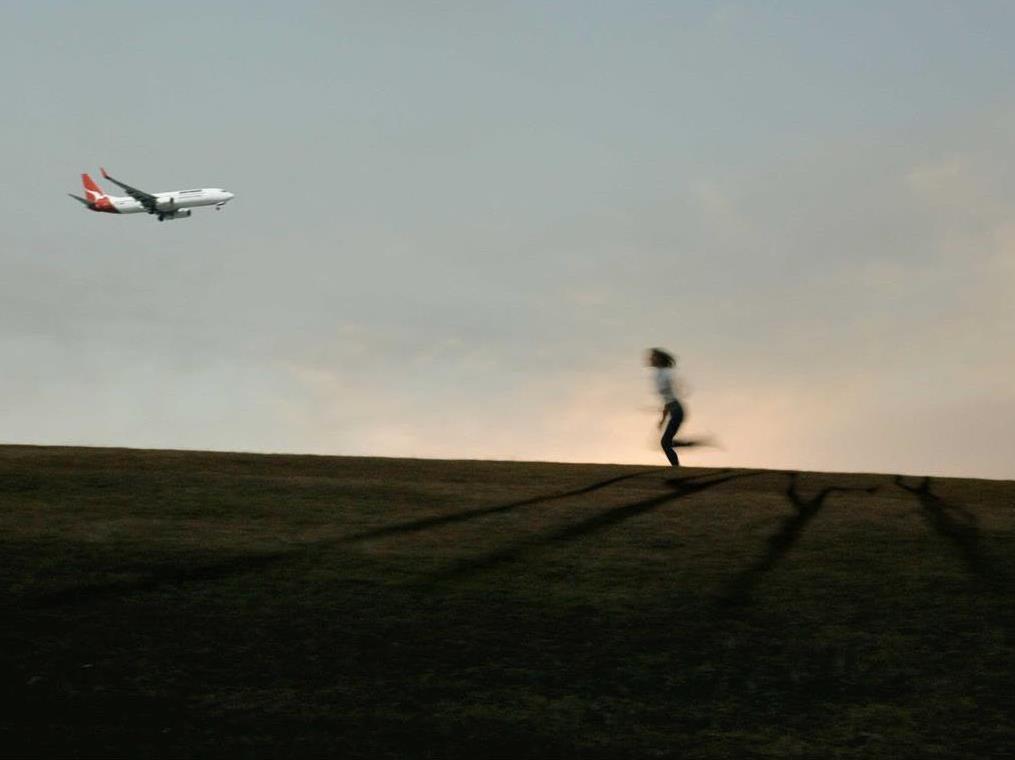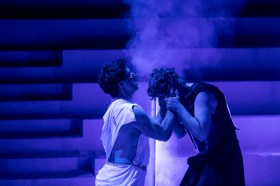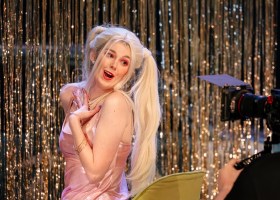Artists often step up to take the voice of conscience of our society, using the space of creative entertainment to provide us with a collective forum for reflection, contemplation and provocation. Choreographer Bianca Martin’s From Afar on a Hill has been through complex development of its examination of Australia’s immigration policies. Many ideas have no doubt been considered, tried and discarded along the way, making it fascinating to see what has remained to best express the ideas at the heart of this work.
The audience encounters a variety of challenges when proceeding from the door to their seats. Once seated, a trio of “contestants” is introduced on stage. Through dance and audience interaction, the contest proceeds, before resolving into a sequence of expressive physical displays. The performance closes with a reprise of some of the dancers’ movements, with voiceover dialogue commenting on the motivations, feelings and reactions of the choreographer and performers.
Such a synopsis of events fails to reflect the many confronting emotional moments and events of Company Upstairs’ production. The simple act of entry is arbitrary, cryptic and contrived to baffle, shame and annoy. Individuals are isolated, with some being herded into a holding area beside the stage. The labyrinthine experience is accompanied by Chris Cobilis crooning disturbing lyrics about the power in the process, to jauntily soothing lounge music. Despite the many detours to enter the venue, performers (dressed officiously as guards, and presenting stern faces) ensure that everyone moves smoothly through to start the performance proper.
The nature of the “contest” does not offer any respite from self-examination. While performers Sarah Chaffey, Bernadette Lewis and Rhiannon Newton introduce themselves, they are contained behind the intimidating wire fencing that audience members have either negotiated, or can see their friends corralled behind. The audience casts open votes on subjective, personal selections, such as contestant weight and personality. This becomes more intricate, with votes on who would be most likely to commit suicide and after that, relative likelihood to be subjected to an increasingly disturbing sequence of events. A dancing competition ensues – move as if you’re on shaky ground, pretend to be a dog, move as if you’ve just given up everything to try to start a new life somewhere else. The compliance with random orders is disturbing, until one contestant baulks at a particular challenge, arguing that any attempt to portray sewing lips together is disrespectful and trivialises the extreme situations that lead to such protests.
Beyond the “contest”, the winning of which serves to underline the lack of agency of any participant or voter, dance remains the medium to disturb and provoke. As Chaffey exhorts the main audience to relax with cheesy disco moves and tunes, Newton and Lewis pace the fence, convincing the segregated audience members to surrender their “passports” by making paper planes to fly out across the stage. A structured dance sequence follows, swiftly moving from raging, menacing attacks at the fence to a structured reprise of 90’s era Qantas ads, the trio miming “I Still Call Australia Home” with angelic faces and neat, mincing steps.
The voiceover commentary section draws on the performers’ ability to capture the essence of the various movements, rapidly, in time with the spoken analysis and reflection. Here the intentions of the creators are closest to being clearly presented, but an audience that has been physically and emotionally challenged throughout the performance is unlikely to accept the musings at face value.
Theatrical elements have been well-chosen, the interactive stage design allows for efficient flow of bodies and time to reflect on topical parallels. Chris Donnelly’s lighting design is dynamic and highlights the changes in mood and activity. Cobilis’ sound design is chilling in its cheesy accessibility. The dance elements themselves are strongly performed, with all three performers complying with the arbitrary instructions to a confronting extent, as well as expressing conflicting emotions.
The big questions arise when looking at the themes and issues that Martin explores through From Afar on a Hill. While much thought has gone into the impact of each small moment of this piece, the large question looms – who is the targeted audience of this work? While Martin offers a space to “ruminate and engage”, is this enough, when such confronting questions have been asked, explicitly and implicitly? A great amount of research, thought, contemplation and skill has gone into devising this work, and the impact on attendees is provocative on many levels. As a dance work, there is much to like and admire. As an effective agent of change, it offers a good start to dialogue.
Rating: 3 stars
From Afar on a Hill
Presented by Company Upstairs and PICA
Director and Choreographer: Bianca Martin
Sound Designer: Chris Cobilis
Lighting Designer: Chris Donnelly
Consultant Live Interaction: Steve Bull
Consultant Sociologist: Farida Fozdar
Consultant Dramaturg: Josephine Wilson
Producer: Jenifer Leys
Performers / Collaborators: Bernadette Lewis, Rhiannon Newton, Sarah Chaffey and Chris Cobilis
PICA Performance Space, Perth Cultural Centre
6-10 October 2015






